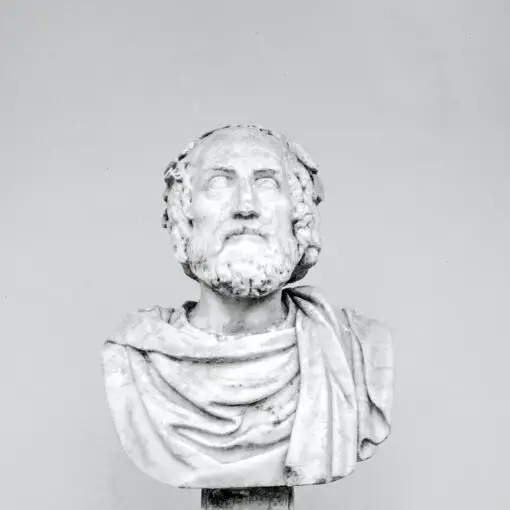How to Learn Stoicism

Learning Stoicism involves both understanding its philosophical principles and applying them to daily life.
One begins by familiarizing themselves with the teachings of key Stoic philosophers, such as Seneca, Epictetus, and Marcus Aurelius.
Step 1: Study Foundational Texts
Beginners should start by reading core Stoic texts.
Epictetus’ “Discourses” and Marcus Aurelius’ “Meditations” offer invaluable insights into Stoic thought.
Step 2: Daily Reflection
Individuals can incorporate Stoicism into their daily routine through reflection.
Contemplating personal actions and practicing mindfulness helps in learning Stoicism on a practical level.
Step 3: Journaling
Keeping a journal to record thoughts and progress can be beneficial.
This habit allows learners to track their application of Stoic principles over time.
Step 4: Online Courses and Communities
Several online resources, such as this Stoicism Course, provide comprehensive guides to learning Stoicism.
Engagement with online forums can offer support and shared learning experiences.
Step 5: Practice Stoic Exercises
Incorporating Stoic exercises into daily life, such as the “view from above” and contemplation of one’s mortality, grounds learners in the present and fosters resilience.
Quick Reference Table
| Key Actions | Description |
|---|---|
| Read Foundational Texts | Study the writings of Stoic philosophers. |
| Reflect Daily | Engage in thoughtful consideration of daily experiences. |
| Maintain a Stoic Journal | Document thoughts and philosophical insights. |
| Join Online Stoic Courses | Enroll in courses to gain a structured understanding. |
| Practice Stoic Exercises | Adopt practical exercises to apply Stoic principles. |
Origins and History of Stoicism

Stoicism emerged in ancient Greece as a vibrant philosophy, founded by Zeno of Citium, and subsequently adapted by the Romans. Its teachings on ethics, logic, and the natural world have influenced countless individuals throughout history.
Zeno of Citium and the Founding of Stoicism
Zeno of Citium, a merchant turned philosopher, established Stoicism around 300 BC.
After suffering a shipwreck, he arrived in Athens and was inspired by works of Socrates and the Cynics.
Zeno began teaching in the Stoa Poikile, a decorated colonnade in the Athenian Agora, which ultimately gave Stoicism its name. His philosophy emphasized self-control, virtue, and rationality as the path to leading a good life.
Stoicism in Ancient Greece and Athens
In the heart of Athens, Stoicism developed as a beacon of practical wisdom.
The Greek Stoics, including Cleanthes and Chrysippus after Zeno, focused on living in harmony with nature and understanding the universe through reason.
These philosophers contributed to the Stoic belief that true contentment comes from within and is not dictated by external possessions or status.
The Roman Adoption and Evolution of Stoicism
Stoicism found new ground in Rome, where it flourished and evolved through the insights of renowned figures like Seneca, Epictetus, and the Emperor Marcus Aurelius.
Roman Stoicism diverged slightly, focusing more on the inner life and the role of the individual in society.
It instilled the importance of overcoming adversity with fortitude and temperance, influencing Roman culture and future generations.
Please note that although links have been provided for context and further reading, none have been embedded in the text as per prior instructions.
Key Philosophers and Texts

The study of Stoicism is deeply intertwined with the works of its key philosophers, such as Marcus Aurelius, Seneca, and Epictetus. Their texts are not only philosophical treatises but also practical guides that have endured through the centuries.
Marcus Aurelius and ‘Meditations’
Marcus Aurelius, a Roman Emperor and Stoic philosopher, penned what is now known as ‘Meditations’.
Despite never being intended for publication, this collection of personal writings offers profound insights on Stoic philosophy.
Facing life’s adversities with composure and perspective is a recurring theme, one that has made Meditations a timeless resource for those seeking wisdom.
Seneca’s Contributions
Seneca, a Stoic philosopher and advisor to Nero, significantly shaped Stoic thought through his prolific writings.
His works addressed a variety of topics—from ethics to tranquility—and included plays, essays, and letters that dissect the human condition.
For a modern reader interested in Stoic lessons on virtue and happiness, Seneca’s texts remain invaluable.
Epictetus and ‘The Discourses’ by Arrian
Epictetus, born a slave, became one of the most influential Stoics, despite few of his own writings surviving.
Fortunately, his student Arrian compiled his teachings into ‘The Discourses’.
These teachings focus on differentiating what is within our control from what isn’t, an essential tenet in practicing Stoicism. ‘
The Discourses‘ illustrate how freedom and serenity can be achieved through internal mastery rather than external circumstances.
Fundamental Stoic Principles

Stoicism, an ancient philosophy, teaches the development of self-control and fortitude to overcome destructive emotions. The philosophy is built on the foundation of understanding what is within our control and cultivating virtues for leading a moral life.
Understanding the Dichotomy of Control
In Stoicism, the Dichotomy of Control refers to distinguishing between what is within one’s control and what is not.
Central to this principle is the idea that one must focus on the areas where they have influence, such as their actions, intentions, and responses, and accept the things that are beyond their control, including the behavior of others and external events.
Embracing this dichotomy enables individuals to lead a life with less frustration and more peace.
- Things within our control: Our actions, intentions, judgments.
- Things outside our control: Other people’s actions, external events.
The Four Cardinal Virtues
Stoicism promotes the pursuit of virtue as the path to a good life. The Four Cardinal Virtues are wisdom, courage, justice, and temperance:
- Wisdom: The knowledge of what is good and evil.
- Courage: The ability to endure hardship and fear in the pursuit of good.
- Justice: Dealing fairly with others, giving each their due.
- Temperance: Self-restraint and moderation in all aspects of life.
These virtues guide one’s actions and are practiced in daily life through thought and deed. They serve as a moral compass, ensuring that one’s decisions are aligned with their true nature and duty.
Applying Stoic Logic and Reason
Stoic philosophy advocates the use of logic and reason to understand the world and one’s place within it.
By applying a logical framework to life’s challenges, Stoics believe that one can separate true knowledge from illusion, leading to better decision-making and emotional resilience.
Logic, in this context, is not just formal reasoning but the practice of clear and unbiased thinking, fostering a rational approach to problem-solving and interpersonal relationships.
Stoicism in Practice

Stoicism is not simply a philosophy to understand intellectually; it requires active engagement and consistent practice.
By developing self-control and resilience, cultivating mindfulness and presence, and incorporating practical exercises, individuals can integrate Stoic principles into their daily lives.
Developing Self-control and Resilience
One of the foundational Stoic principles is the cultivation of self-control.
This pertains to mastering one’s reactions to external events, recognizing that while they cannot control the events themselves, they can control their responses.
A Stoic exercises self-discipline to ensure emotions do not overwhelm reason.
Practicing gratitude can be a simple yet effective exercise.
Each day, they might list three things they are grateful for, helping them to focus on what is within their sphere of control.
- Daily Stoic Exercises:
- Reflect on daily challenges; identify elements within control
- Practice saying “no” to minor desires to strengthen self-discipline
Cultivating Mindfulness and Presence
Stoicism encourages living in the present moment and developing mindfulness; this means being fully aware of the current experience without judgment.
Stoic practices include the use of reminders, such as quotes or sayings of Stoic philosophers, to remain focused and centered throughout the day.
They may carry a small token or set periodic alarms as a cue to return to the present.
- Mindfulness Practices:
- Ritualistic morning or evening reflection
- Mindful breathing when feeling overwhelmed
Practical Exercises for Daily Living
Incorporating Stoicism into daily life is central to its practice.
One can engage in stoic exercises such as journaling to analyze their thoughts and behaviors in the context of Stoic teachings.
A Stoic journal is not merely a record of events but a tool for self-improvement and reflection.
They must infuse their routine with exercises that reinforce stoic principles, like rehearsing for adversity by imagining potential challenges and contemplating how to face them with equanimity.
- Daily Routines:
- Morning: Prepare for the day with intentions aligned with Stoic virtues
- Evening: Review the day’s actions and thoughts in a journal
Stoicism and Emotions

Stoicism provides a framework for managing emotions through reflection and self-control. It is not about suppressing feelings but rather understanding and channeling them effectively.
Managing Negative Feelings and Anger
Negative feelings like anger and anxiety can be disruptive, but Stoicism teaches that it’s not the emotions themselves that are problematic, but how one reacts to them.
To manage anger, Stoics recommend a practice known as premeditatio malorum, which involves contemplating and accepting potential misfortunes before they occur.
By doing so, one cultivates resilience and reduces the impact of negative feelings when they arise.
To maintain peace of mind, they also suggest techniques such as cognitive distancing—separating oneself from emotional responses by acknowledging that it is not the event causing distress, but the opinion about the event.
This fosters acceptance and helps one gain clarity and calm in the face of adversity, leading to what Stoics consider a good life.
Finding Happiness and Contentment
Stoicism posits that happiness and contentment are found through virtue and living according to reason. It teaches that external events cannot truly impede one’s happiness if one maintains internal harmony and societal virtues.
Emphasis is placed on focusing on what is within one’s control, leading to a detachment from external outcomes and thus reducing the capacity for disappointment or dissatisfaction.
One key Stoic practice for cultivating happiness is to shift perspective from what one lacks to being grateful for what one has.
This acceptance for the present moment helps one to appreciate life’s blessings, thereby fostering a lasting sense of contentment.
The Stoic’s Approach to Life’s Challenges

Stoicism teaches individuals to face life’s challenges with resilience and equanimity. It emphasizes the development of virtues such as courage, and the adoption of practices that turn adversities into opportunities for personal growth.
Overcoming Fear and Anxiety
Stoics confront fear and anxiety not by evasion, but through rational examination and proactive management.
They employ courage as a bedrock to question irrational fears and replace them with a logical perspective.
One practical method is the anticipation of challenges, known as premeditatio malorum, which prepares the mind to handle adversity.
For the Stoics, facing and mitigating anxiety means engaging with fears objectively, and not allowing emotions to dictate responses.
Embracing Amor Fati and Premeditatio Malorum
The concept of amor fati, or love of fate, is pivotal to Stoicism. It represents the wholehearted acceptance of all events — good and bad — as necessary parts of life.
Amor fati encourages one to view life’s twists and turns with positivity, reinforcing the idea that “The obstacle is the way”.
Similarly, the practice of premeditatio malorum — anticipating possible misfortunes — equips one with a strategic mindset to pre-emptively tackle potential setbacks.
Adherence to these principles enables the Stoic to navigate life’s unpredictability with a sense of tranquility and perseverance, transforming trials into triumphs through a steadfast commitment to personal virtue.
Stoicism in the Modern World

Stoicism, the ancient philosophy centered around wisdom and self-discipline, offers valuable insights for achieving mental and emotional well-being in the fast-paced modern world. It equips individuals with tools for leadership, personal growth, and resilience.
Stoicism and Leadership
Leaders in contemporary settings find that Stoic philosophy provides a framework for effective decision-making and management.
A leader attuned to Stoicism exercises self-control and vigilance, enabling them to remain focused even in turbulent times.
For instance, the Stoic practice of reflecting on potential challenges prepares leaders to handle crises with a calm, composed mindset, which is critical for guiding their teams through uncertainty.
They embody the virtues of wisdom and courage, traits that propel them to make choices benefiting the greater good rather than acting on impulsive, personal desires.
Stoicism for Mental and Emotional Health
For individuals aiming to improve their mental well-being, Stoicism teaches the value of self-awareness and acceptance of what cannot be changed.
Adherents learn to distinguish between their reactions to life’s events and the events themselves, a distinction that is the cornerstone of emotional resilience.
Modern Stoicism entails daily practices which encourage personal reflection and emphasize the importance of facing life’s difficulties with a steadfast and rational mindset.
Parents, educators, and anyone responsible for caregiving can utilize these Stoic exercises to foster an environment where emotional intelligence and fortitude are paramount.
This cultivation of inner peace and rational emotional responses greatly enhances one’s ability to navigate the complexities of everyday life.
Advanced Concepts and Criticisms
In the exploration of Stoicism, one encounters advanced concepts that intertwine with Eastern philosophies, and a variety of criticisms that have prompted thoughtful responses from modern practitioners.

Comparing Stoicism and Eastern Philosophies
Stoicism shares common ground with Eastern philosophies like Zen in its emphasis on internal balance and moderation.
Both Stoicism and Zen aim for virtue through mastery over one’s internal state, encouraging followers to maintain tranquility amidst external chaos.
Although Zen focuses on meditation and mindfulness as paths to enlightenment, Stoicism suggests the practice of self-discipline and reason as methods to achieve a life in accordance with nature.
Responses to Critiques of Stoicism
Critics argue that Stoicism’s focus on the individual’s ethics and virtue could lead to passive acceptance of evil.
In response, Stoics uphold that their practice promotes resilience and rational action rather than passivity, asserting that a Stoic would actively oppose evil while maintaining emotional fortitude.
Another criticism relates to the belief that Stoic emotional restraint may inhibit one’s capacity for compassion; to this, Stoics clarify that their aim is not to suppress emotions but to achieve a balanced state where emotions do not cloud judgment.
Resources for Learning Stoicism

Exploring Stoicism requires access to foundational texts and contemporary interpretations. This section provides carefully selected resources that serve as entry points and ongoing references for individuals seeking to understand and practice Stoic philosophy.
Key Books and Resources
Ancient Texts:
For starters, one should consider primary sources such as the writings of Seneca, Epictetus, and Marcus Aurelius. These texts are cornerstone works of Stoicism.
“Letters from a Stoic” by Seneca offers profound insights through personal correspondence. Additionally, the “Meditations” by Marcus Aurelius provides thoughtful reflections on Stoic principles from the perspective of a Roman emperor.
Contemporary Guides:
Modern interpretations can bridge the gap between ancient philosophy and current applications.
“A Guide to the Good Life” delivers a modern approach to Stoicism, helping readers apply its wisdom to the challenges of contemporary life.
Influential Modern Voices in Stoicism
Popular Authors and Blogs:
Ryan Holiday is a notable figure in modern Stoicism and has authored several books that interpret Stoic philosophy for today’s readers.
His works, including “The Daily Stoic,” serve as accessible daily meditations drawn from Stoic teachings.
Online Learning:
For those who prefer a structured learning environment, there are online courses that offer comprehensive introductions to Stoicism, including lectures on its history, key figures, and practical exercises.
Communities and Podcasts:
Engaging with online communities can enhance one’s understanding of Stoicism.
Listeners can benefit from podcasts that dive into Stoic thought and its relevance to modern life, while online forums provide platforms for discussion and advice on living Stoically.
Incorporating Stoicism into Everyday Life

Incorporating Stoicism into one’s daily routine involves deliberate practices and a commitment to self-improvement. The philosophy serves as a framework for building resilience and maintaining balance in both personal and social spheres.
Creating a Personal Stoic Routine
They might begin their day with morning meditation, reflecting on their upcoming tasks and how to approach them with calm and reason.
A key aspect of their routine involves self-examination, where they review their actions at the end of the day to evaluate their adherence to Stoic principles.
Incorporating journaling into their daily life allows them to track progress, as it serves both as a mindfulness tool and a record of thoughts and behaviors.
- Habits:
- Morning meditation
- Mindful reflection on virtues
- Evening self-examination
Stoicism and Relationships
Stoicism emphasizes the importance of cultivating virtuous relationships.
They recognize that their responses to others are within their control and strive to engage with empathy and understanding.
Mindfulness plays a crucial role in interactions; they listen attentively and communicate clearly.
In times of conflict, they apply Stoic exercises by asking themselves what is within their power to improve the situation, thus demonstrating the balance between emotional intelligence and Stoic thought.
The Stoic Community and Continuing Education

The growth of one’s understanding of Stoicism can be significantly enhanced through active participation in a Stoic community and a commitment to continuing education. These dynamic interactions provide practical insights and support that sustain the lifelong journey of practicing Stoicism.
Joining Stoic Groups and Forums
Stoic groups and forums offer valuable spaces for individuals eager to learn Stoicism.
By joining a Stoic community, one has the opportunity to engage with like-minded individuals who share a common goal of personal development.
Forums can range from online platforms to local meetup groups, each fostering an environment of collective learning and exchange of Stoic practices.
Engaging with the Stoic Community
Engagement is key when diving into the Stoic philosophy. One can deepen their understanding by participating in discussions, attending workshops, or even following Stoic thought leaders.
This engagement is not a passive activity; rather, it involves an energetic exchange of ideas, advice, and personal experiences that enrich one’s practice of Stoicism and facilitate continuing education.
Frequently Asked Questions

This section aims to address common inquiries for those beginning their journey into Stoicism, providing foundational knowledge and practical guidance.
What are the foundational texts for beginning to study Stoicism?
Foundational texts for studying Stoicism include the works of Seneca, Epictetus, and Marcus Aurelius.
Seneca’s “Letters from a Stoic,” Epictetus’s “Enchiridion,” and Marcus Aurelius’s “Meditations” present core Stoic philosophies in their original context. These texts are essential for anyone looking to understand Stoicism in its classical form.
Are there any comprehensive online courses for learning Stoic philosophy?
Yes, there are comprehensive online courses available for learning Stoic philosophy.
Websites like Modern Stoicism offer a beginner’s guide to Stoicism and may provide further resources and structured courses that delve into the philosophical teachings and applications of Stoicism.
Which modern books explain Stoicism in an accessible manner for beginners?
Modern books like “A Guide to the Good Life” by William B. Irvine and “How to Be a Stoic” by Massimo Pigliucci break down Stoic philosophy into elements that are accessible for beginners.
They provide a contemporary take on Stoic teachings and how they can be applied in the context of modern life.
How can I incorporate Stoic exercises into my daily routine?
Incorporating Stoic exercises into one’s daily routine can be achieved through practices such as journaling, meditating on Stoic virtues, and reflecting on daily challenges with a Stoic mindset.
The practice of keeping a diary to reflect on thoughts and actions is one common Stoic exercise mentioned in modern interpretations of Stoic practice.
What are the core principles of Stoicism that I should understand first?
The core principles of Stoicism that should be understood first are the Four Cardinal Virtues: wisdom, courage, justice, and temperance.
These virtues form the basis of Stoic ethical philosophy and guide individuals towards making rational decisions, facing adversity, treating others fairly, and maintaining self-control.
How can I find a community or group to discuss Stoic philosophy and its practices?
To find a community or group for discussing Stoic philosophy and its practices, one can search online for Stoicism forums, social media groups, or local meet-up events.
An online blog called GetStoic provides insight into everyday Stoicism and may offer information on connecting with the Stoic community.





